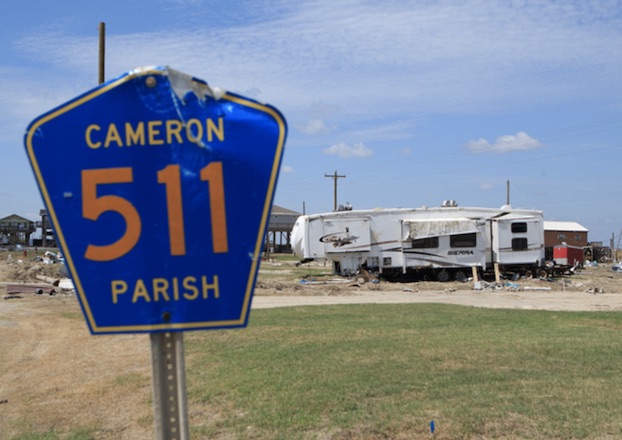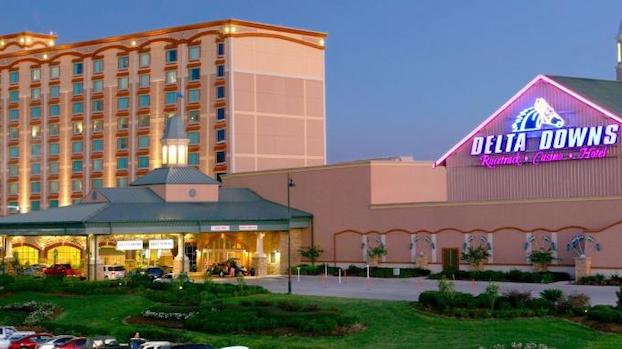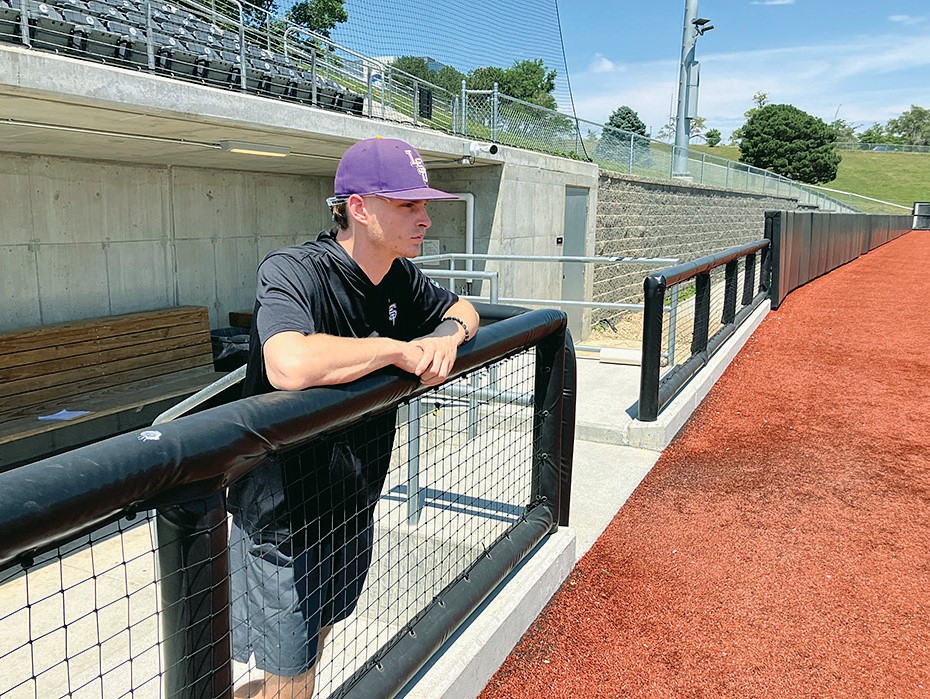Administrator: Shoreline, flood protection crucial in Cameron
Published 6:26 pm Friday, November 12, 2021

- Hurricane damage remains in the Holly Beach area of Cameron Parish after Hurricane Laura devastated the area. (Kirk Meche / American Press)
Shoreline protection throughout Cameron Parish’s 100 miles of coastline is a top priority for parish officials.
However, Kara Bonsall, parish coastal zone administrator, said more funding is needed to address the 80 miles of shoreline that remain untouched.
“We will continue that vision to protect the whole coast,” she said. “It doesn’t just fix Cameron Parish; it’s all points north from Cameron. We all really need to understand that these projects matter if they want to protect their land.”
Breakwater protection has been installed along Rockefeller Refuge, Rutherford Beach, Little Florida Beach and Long Beach. She said the benefits from projects like these are visible within just a few weeks.
“You can see settlement starting to take place and land building back,” Bonsall said.
Along with shoreline protection, Bonsall said sea level rise and land sinking that has caused the hydrological changes have caused a need for installing pump systems and water control structures that can drain certain areas. She said the parish is looking at a flood reduction effort through additional larger water control structures and pump stations, as well as improving the connectivity of drainage laterals. The parish has hired the engineering firm C.H. Fenstermaker and Associates to get the project shovel-ready once funding becomes available through a grant or another outlet.
“We’re now having to fight flood water coming into Little Chenier, Creole and Oak Grove areas,” she said. “Some residents can’t even mow their lawns. We should get a proposal next week on this.”
Part of the additional floodwater stems from the U.S. Army Corps of Engineers not dredging the Gulf Intracoastal Waterway, or GIWW, in more than 45 years, Bonsall said. She said the parish is pushing the Corps to dredge the GIWW, but the Corps has indicated it has no plans to do that unless there is evidence of shoaling, when a barge gets stuck going down the waterway.
Bonsall said local, state and federal agencies are looking more at larger-scale projects that can impact thousands of acres, rather than a few hundred acres.
One project through the Louisiana Watershed Initiative is the $25 million Mermentau Basin Inundation Project. Bonsall said the project is located on portions of Rockefeller Wildlife Refuge and is designed to reduce prolonged periods of inundation and relieve flooding stress in the immediate area, as well as Vermilion, Lafayette, Acadia, Evangeline and Lafayette parishes.
The state Office of Community of Development approved funding for the project in May through Community Development Block Grant-MIT, or mitigation dollars.
The need for such a project came about following the historic August 2016 flood that impacted numerous parishes along eastern and central Louisiana. During that time, the Mermentau River remained above flood stage for three weeks, she said.
Bonsall said the effort will enhance the east end locks, the main structure that regulates water flow to the Gulf of Mexico through the Joseph Harbor Canal. New control gates will allow for more frequent water discharge. She said the Louisiana Department of Wildlife and Fisheries and the Rockefeller Wildlife Refuge will take ownership, liability and maintenance of the project.
In addition, three large drainage structures will be installed at different locations within Cameron and Vermilion parishes, Bonsall said. Another element is drainage improvements along La. 82, which acts a hurricane evacuation route.
“There are a limited number of drainage structures crossing the highway and limited lateral drainage facilities,” she said. “That can result in prolonged periods of inundation during heavy rain events.”
A $28.6 million marsh and hydrological restoration project is being funded by CPRA grant money and will benefit 65,000 acres of the Cameron-Creole watershed through large-scale marsh creation and enhanced drainage structures, Bonsall said. The project is in the final stages of engineering and design.
Bonsall also talked about the need for additional drainage structures with the rise in sea level.
She said the CPRA provided portable pumps after Hurricane Laura that helped de-water the town of Cameron within three days, which was crucial in assessing post-storm damage.
Looking forward, the Cameron Police Jury is focused on fixing drainage issues, rather than studying them, Bonsall said.
“We have projects that are proven to be successful,” she said. “We have to continue to apply for funding to get these on the ground for construction. There’s no more need for studying.”





